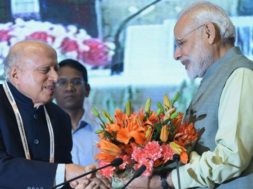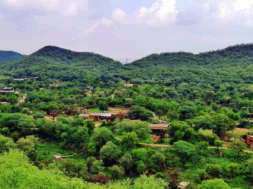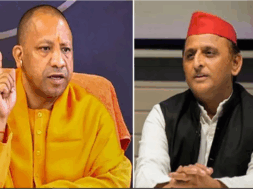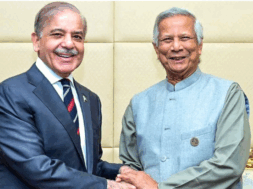
Obituary: India’s God of Farming, MSS, is yet to be honored with Bharat Ratna
Virendra Pandit
New Delhi: “If God appears to poor and hungry in the form of bread, as Mahatma Gandhi said, that God is Dr. MS Swaminathan who should be worshipped by every citizen while taking daily meals,” Dr. AK Singh, Director, Indian Agriculture Research Institute (IARI) said as he paid glowing tributes to the Father of India’s Green Revolution, who passed away on Thursday.
Dr Mankombu Sambasivan Swaminathan, popularly known by his name’s acronym MSS, was 98. He is survived by three daughters–Soumya, Madhura, and Nitya. His wife Mina died in 2022.
The world-renowned agronomist, agricultural scientist, and plant geneticist breathed his last at 11.20 a.m. in Chennai at the age of 98.
The TIME magazine recognized him as one of the 20 most influential Asians of the 20th century and one of the only three from India, the other two being Mahatma Gandhi and Rabindranath Tagore. A grateful India decorated him with all civilian awards, except the Bharat Ratna.
On the demise of MSS, tributes poured in from India and abroad.
President Droupadi Murmu said Dr. Swaminathan left behind a rich legacy that would serve as a “guiding light to steer the world towards a safer and hunger-free future for humanity.”
Prime Minister Narendra Modi recalled that at a very critical period in the nation’s history, Dr. Swaminathan’s groundbreaking work in agriculture transformed the lives of millions and ensured food security for our nation.
In India, he won lasting praise when, under his leadership, the South Asian country transformed from a net importer of food grains to rank among the largest producers of wheat and rice. Together with Dr. Varghese Kurien, Father of the White Revolution, he became the messiah of the poor.
In 1965, when India fought a war against Pakistan, the then Prime Minister Lal Bahadur Shastri’s popular slogan Jai Jawan, Jai Kisan, resonated across the country, underlining the beginning of the Green Revolution in northwest India, led by Dr. Swaminathan.
He ably served India in various capacities, including as the Director of the IARI (1961-72), Director-General of ICAR and Secretary to the Government of India’s Department of Agricultural Research and Education (1972-79), and then as the DG, International Rice Research Institute, the Philippines (1982-88).
But his lasting contribution was the Green Revolution, which was launched in 1965-66 in the face of a rising population that saw per capita annual food grain production fall from about 190 kg in 1961-62 to 151 kg five years later.
In the mid-1960s, a grain-deficient India had to import a substandard quality of wheat (“Red Wheat”) from the USA where it was a surplus byproduct of farming fed to horses and other cattle or thrown into the sea. Dr. Swaminathan’s pioneering work rescued the country from this ignominy.
His Green Revolution decade (1967-68 to 1977-78) revolved around five main pillars: strong research and development; price assurance to producers through a robust system of minimum support price (MSP); inter and intra-year price stability through open market operations; maintenance of buffer stocks, and distribution of food grains through an effective public distribution system (PDS).
When India embarked upon this Revolution, Dr. Swaminathan drew inspiration from the International Maize and Wheat Research Centre (CIMMYT) in Mexico, which had developed a semi-dwarf disease-resistant, high-yielding variety of wheat. A similar breakthrough in rice was made at the International Rice Research Institute in the Philippines.
With the assistance of CIMMYT’s Director and Nobel Laureate Dr. Norman Borlaug, India quickly adopted high-yielding varieties of wheat and rice. The entire northwest region of the Indo-Gangetic plains, comprising Punjab, Haryana, and western Uttar Pradesh, with their robust irrigation systems and affinity for farming, were selected as early adopters for the new yields.
The results were quick, successful, and ably supported by a robust procurement mechanism. Between 1966-67 and 1971-72, India’s wheat production more than doubled from 11 million tons to 23 million tons. Likewise, rice production in the first five years of the adoption of new yields increased by 30 percent from 33 million tons to 42 million tons.
After the Green Revolution, India never faced a serious food security threat, despite its population swelling from 500 million in 1966 to over 1,120 million in 2010 and 1,400 million in 2023 when it produced a whopping 330 million tons of food grain.
In 2006, Dr. Swaminathan, as the Chairman of the National Commission on Farmers (NCF), suggested, among other things, that the Minimum Selling Price (MSP) should be at least 50 percent more than the weighted average cost of production.
The Commission’s reports touched upon a wide gamut of issues that agriculture and the food economy faced, such as land reforms, irrigation, credit and insurance, productivity in agriculture, food security, prevention of farmers’ suicides, competitiveness in farming, employment, and bio-resources.
The eminent agriculture scientist, in a presentation on ‘Doubling Farmers’ Income’ in November 2017, said that MSP should be 50 percent more than the comprehensive cost of production (C2).
While he served as the Director-General of the International Rice Research Institute (IRRI) in the Philippines, he was decorated with the first World Food Prize in 1987, equivalent to the Nobel Prize in Agriculture. After this, he set up the MS Swaminathan Research Foundation (MSSRF) in Chennai.
In India, the government conferred on him all three Padma awards, including the Padma Vibhushan. Among others, he was also decorated with the Ramon Magsaysay Award (1971) and the Albert Einstein World Science Award (1986).
The United Nations Environment Programme described him as “the Father of Economic Ecology” for his leadership of the Green Revolution movement in agriculture.
Javier Perez de Cuellar, the then Secretary General of the United Nations, as “a living legend who will go into the annals of history as a world scientist of rare distinction”.














